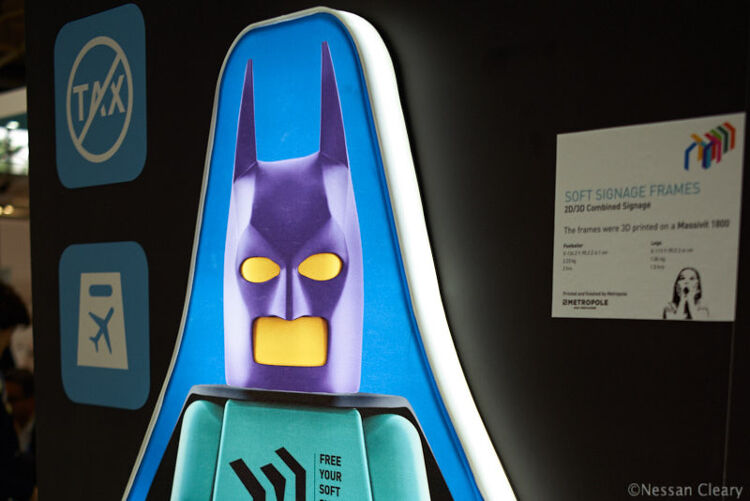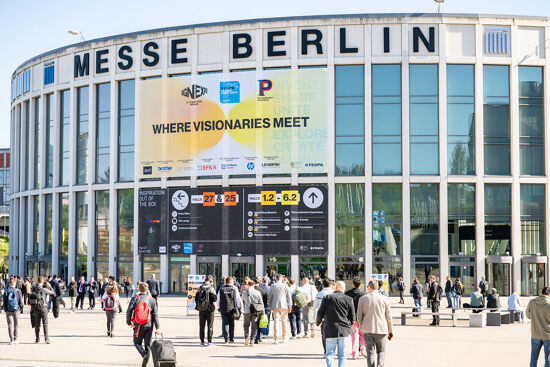What are the opportunities for printers regarding backlit displays and window graphics?

Nessan Cleary describes the various opportunities for printers regarding window graphics. There is a wide range of materials and lighting options available.
Windows offer a huge amount of space, whether on shops or vehicles, that can be used for display messaging. Their transparent nature allows the graphics to float and lighting from behind can enhance this appeal. There are many functions of window graphics. They can form part of a business’ overall branding as well as decorating the windows. There’s an obvious marketing requirement for most businesses, which can also include small signs for short term promotions, as well as customer information such as standard and seasonal opening times. Window graphics can also help to insulate people on the inside from the ambient conditions outside by blocking out bright irritating sunlight or simply preventing the rain and grey clouds outside from ruining the atmosphere inside.
Some window graphics are meant to be semi-permanent but they are still relatively easy to change when needed. The simplest approach is to use self-adhesive film on the outside of the window. There are plenty of vinyl films around, and a growing number of PVC-free alternatives. That said, you will have to ensure that the film can cope with the ambient conditions, which include sunlight and bad weather.
 Here, a clear film allows this Christmas message to stand out from behind the glass. ©Nessan Cleary
Here, a clear film allows this Christmas message to stand out from behind the glass. ©Nessan Cleary
The alternative is to print the graphic in reverse so that the adhesive side can be applied to the inside of the window, with the image facing out. This has the advantage of protecting the graphic from the weather, though you may still have to consider the risk of fading from sunlight exposure. It also means the window can be cleaned without affecting the graphic.
There's a huge range of clear films designed specifically for use with window graphics. In addition, translucent films, with different degrees of transparency can be used to provide an etched or frosted effect. You’ll almost certainly need a printer that includes white ink, both to print graphic elements of the design, and in some cases to provide a backing layer to give more depth to the image.
 This sign has been printed on a perforated film, allowing for privacy inside the shop, while still letting light through the window. ©Nessan Cleary
This sign has been printed on a perforated film, allowing for privacy inside the shop, while still letting light through the window. ©Nessan Cleary
In many cases it takes a degree of skill to apply these films properly to a window. The best technique is to wash the window with soapy water and then apply the graphic, using a squeegee to press the film to the window, working from the centre outwards to force out any trapped air bubbles. The soapy water helps with positioning the film in precisely the right place but once the adhesive has fully activated it will be difficult to reposition the film.
A useful alternative is to use a cling film material as these rely on static electricity rather than adhesive, which means they are easy to apply and there’s no mess when they’re removed. Better still, they can be re-used multiple times if they are handled carefully though they can be quite delicate.
Another option, perforated window films, get around the problem of large window graphics preventing light from passing through, which can create dark interiors. These films feature tiny holes that let light through so can be used to completely cover a window with a graphic while still allowing enough light through to illuminate the inside of a building. This can also give a high degree of privacy to people on the inside, while still allowing them to see out. As such this is ideal for some offices and consultancy businesses.
Backlits
One of the fundamental weaknesses of most large format graphics is that print relies on light reflected off the surface as opposed to digital signage where the light is emitted through the screen. This means that printed graphics can look duller by comparison and are limited to the secondary colours of cyan, magenta and yellow rather than the primary red, green and blue.
However backlit displays offer a useful alternative. By positioning the light source behind the graphic, the light emanates through the display, giving it a much more vibrant appearance and considerably enhancing the colours. There are a number of different approaches.
Perhaps the most effective is a straightforward backlit display unit with a light source inside and a graphic on one side or more. These displays have used long life fluorescent tube lamps but nowadays mainly use LEDs for low power consumption. The graphic can be printed on a frosted or translucent display film.
However you will need a printer that can print the graphic in several layers simultaneously. In some cases you’ll need to combine different images together in prepress but the actual layering is a function of the printer and will usually be set up by the operator on the machine’s front panel. Since all the layers are printed in a single pass, they are all in perfect registration.
For a simple backlit image you will need three layers consisting of CMYK plus a flood white layer, with another CMYK layer. The first layer contains the graphic for daylight use, with the white layer acting as an opaque background to both enhance the colours of the first layer and hide the second layer. When the Lightbox is switched on, the second CMYK layer adds additional colour density to the image, with the white layer now acting as a diffuser. The second image layer can be identical to the first, so that the image appears similar under both lighting conditions. But alternatively you can use a variant, perhaps with different colours, or extra graphic elements for the backlit image.
In a similar vein, you can also use multiple layers to produce a double-sided image in one pass using a single clear substrate. This eliminates the time and materials used in printing the two sides separately and the need to have a blockout material between them. Instead, the first colour layer is printed, followed by a white flood coating to give more depth to the colours, and then a flood black layer to separate the front and back images. This is followed by a second flood white layer, and then the final graphic layer, which can either be the same image as the front but printed the right way around for that side, or a completely separate image.
In terms of the film substrates used, it’s also worth considering textile options that offer a more sustainable alternative. Using a textile has the further advantage that the material is more robust than plastic films and can be mailed out to a customer without worrying about creases or damage. The shop staff can then be left to install the graphic with no need to send out a specialised installer.
In conclusion, the range of materials and the different lighting options mean that window graphics offer service providers a useful opportunity to showcase their creative skills.
To discover the latest content that covers a wide range of sectors different substrates sign up for FESPA’s free monthly newsletter FESPA World available in English, Spanish and German.
Topics
Interested in joining our community?
Enquire today about joining your local FESPA Association or FESPA Direct
Recent news

FESPA announces death of Lascelle Barrow, Honorary FESPA Board member & Past President
With great sadness, FESPA today shares the news of the death of FESPA Honorary Board Member and Past President Lascelle ‘Las’ Barrow. Lascelle passed away on 22 May 2025 at the age of 79, after a prolonged illness.
.png?width=550)
How to transform your production with the HP Latex R530 Printer
We speak to Daniel Martinez, SVP and Division President of Large Format Printing and Construction Servicdes at HP at FESPA Global Print Expo 2025 in Berlin.

The latest product launches from FESPA Global Print Expo 2025
With more than 100 new products launched during the FESPA Global Print Expo 2025, Rob Fletcher picks out some of the latest solutions that got people talking on the show floor in Berlin.
.png?width=550)
How to optimise your production with Brother
We speak to Folker Stachetzki, Head of Marketing at Brother at FESPA Global Print Expo 2025 in Berlin about the GTX600 series and how it maintains outstanding print quality and exceptional washability